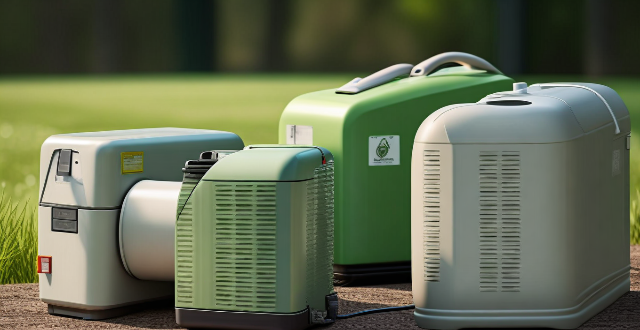Carbon capture technology can be used with renewable energy sources to reduce greenhouse gas emissions and mitigate climate change. There are several ways that this technology can be used, including post-combustion capture, pre-combustion capture, oxy-fuel combustion, and chemical looping combustion. However, there are also challenges and considerations that must be taken into account, such as cost, energy requirements, and storage.

Carbon Capture Technology and Renewable Energy Sources
Carbon capture technology is a process that captures carbon dioxide emissions from power plants, industrial processes, and other sources before they are released into the atmosphere. This technology can be used in conjunction with renewable energy sources to reduce greenhouse gas emissions and mitigate climate change.
Why Use Carbon Capture Technology with Renewable Energy Sources?
* Reduce Emissions: By capturing carbon dioxide emissions from power plants and other sources, carbon capture technology can help reduce greenhouse gas emissions and mitigate climate change.
* Increase Efficiency: When combined with renewable energy sources, carbon capture technology can increase the overall efficiency of the system by reducing the amount of fossil fuels needed to generate electricity.
* Improve Air Quality: Carbon capture technology can also improve air quality by removing pollutants such as sulfur dioxide and nitrogen oxides from the flue gas stream.
How Can Carbon Capture Technology Be Used with Renewable Energy Sources?
There are several ways that carbon capture technology can be used in conjunction with renewable energy sources:
1. Post-Combustion Capture
Post-combustion capture involves capturing carbon dioxide after it has been produced by burning fossil fuels. This method can be used in conjunction with renewable energy sources by using the captured carbon dioxide for enhanced oil recovery or storage in underground geological formations.
2. Pre-Combustion Capture
Pre-combustion capture involves converting fossil fuels into hydrogen and carbon dioxide before combustion takes place. This method can be used in conjunction with renewable energy sources by using the hydrogen as a fuel source for generating electricity.
3. Oxy-Fuel Combustion
Oxy-fuel combustion involves burning fossil fuels in pure oxygen instead of air, which produces a flue gas stream that is primarily composed of carbon dioxide and water vapor. This method can be used in conjunction with renewable energy sources by using the captured carbon dioxide for enhanced oil recovery or storage in underground geological formations.
4. Chemical Looping Combustion
Chemical looping combustion involves using metal oxides to transfer oxygen to the fuel, producing a flue gas stream that is primarily composed of carbon dioxide and water vapor. This method can be used in conjunction with renewable energy sources by using the captured carbon dioxide for enhanced oil recovery or storage in underground geological formations.
Challenges and Considerations
While combining carbon capture technology with renewable energy sources has many benefits, there are also challenges and considerations that must be taken into account:
* Cost: Carbon capture technology can be expensive to implement and operate, which may make it less economically viable than other renewable energy sources alone.
* Energy Requirements: Some carbon capture technologies require significant amounts of energy to operate, which may reduce the overall efficiency of the system.
* Storage: Once carbon dioxide has been captured, it must be stored in a safe and secure location to prevent it from being released back into the atmosphere. This can be challenging and costly.